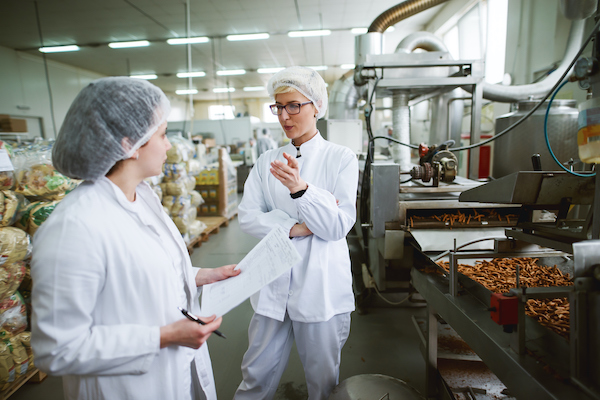
Key takeaways:
- Five proven ROI drivers: ERP systems, AI/analytics, supply chain traceability, automation, and food safety technologies consistently deliver measurable returns when matched to the right operational problems.
- Context matters for payoff: Each technology’s ROI depends on fit—ERP requires fragmented systems, AI thrives with clean/integrated data, automation works best with standardized processes and labor shortages, and traceability or food safety pay off most in high-risk or compliance-heavy environments.
- Focus on costliest challenges: The strongest ROI comes from aligning technology investments with your biggest operational costs or risks, turning technology adoption from a trend-driven choice into a problem-solving strategy.
Not all technology investments are created equal. Walk through any food manufacturing trade show and you’ll encounter hundreds of technology vendors, each promising to transform your operations. From blockchain for traceability to machine learning for predictive maintenance, the options seem endless. But which technologies actually deliver measurable returns in food manufacturing environments?
After analyzing successful implementations across food manufacturing for our “Technology That Pays” report, five technology categories consistently deliver measurable ROI when matched to specific operational challenges.
1. ERP and business systems: The integration platform
ERP modernization provides the data integration foundation that other technologies require. It’s a prerequisite rather than a standalone investment for companies pursuing digital transformation.
Many food manufacturers operate with fragmented systems that limit business agility. When production, inventory, financial, and quality data exist in separate systems, decision-making becomes reactive rather than proactive.
When ERP investments pay off: Companies that will see the most value from ERP are those with fragmented systems limiting business agility or those planning other technology investments requiring data integration.
2. AI and advanced analytics: The problem-solution fit challenge
AI works best for problems with clear cost quantification, sufficient data volume, and measurable success metrics. The gap between AI potential and actual results often comes down to preparation rather than technology capability.
When AI pays off: Companies with integrated data systems, documented operational inefficiencies, and technical support capabilities see the strongest results.
3. Supply chain and traceability: The compliance-driven investment
New FDA traceability rules and rising recall costs make supply chain and food safety technologies mandatory investments rather than optional efficiency projects. The ROI calculation shifts from productivity gains to cost avoidance and risk mitigation.
When traceability pays off: Companies with complex supply networks, high-risk products, or significant recall exposure see the strongest value proposition.
4. Automation and robotics: The labor crisis solution
Automation ROI has shifted from efficiency gains to workforce stability. Labor shortages make consistent staffing more valuable than marginal productivity improvements. For example, Nestlé Purina’s robotic maintenance inspection addressed workforce capacity constraints by handling routine equipment monitoring, allowing existing maintenance technicians to focus on repairs rather than time-consuming inspection rounds.
When automation pays off: Companies with standardized, high-volume processes and chronic staffing challenges in specific roles see the strongest returns.
5. Food safety and quality technology: The risk mitigation investment
Food safety technology investments are driven by risk mitigation rather than operational efficiency. The cost of safety incidents—recalls, regulatory penalties, legal liability, and brand damage—often exceeds operational efficiency gains from other technologies.
When safety technology pays off: Companies that see the greatest returns include those with high-risk products, complex processes, or significant brand exposure where safety incidents could cause substantial financial and reputational damage.
The bottom line
Match your highest-cost operational challenge to these five categories. That’s where you’ll find your best ROI opportunity.
Take the next step: Calculate your specific technology ROI
These five technology categories provide the foundation, but every food manufacturer’s ROI equation is different. Get the complete methodology for identifying your highest-cost challenges and calculating technology ROI: Download the full “Technology That Pays” report.

Credit: Source link













